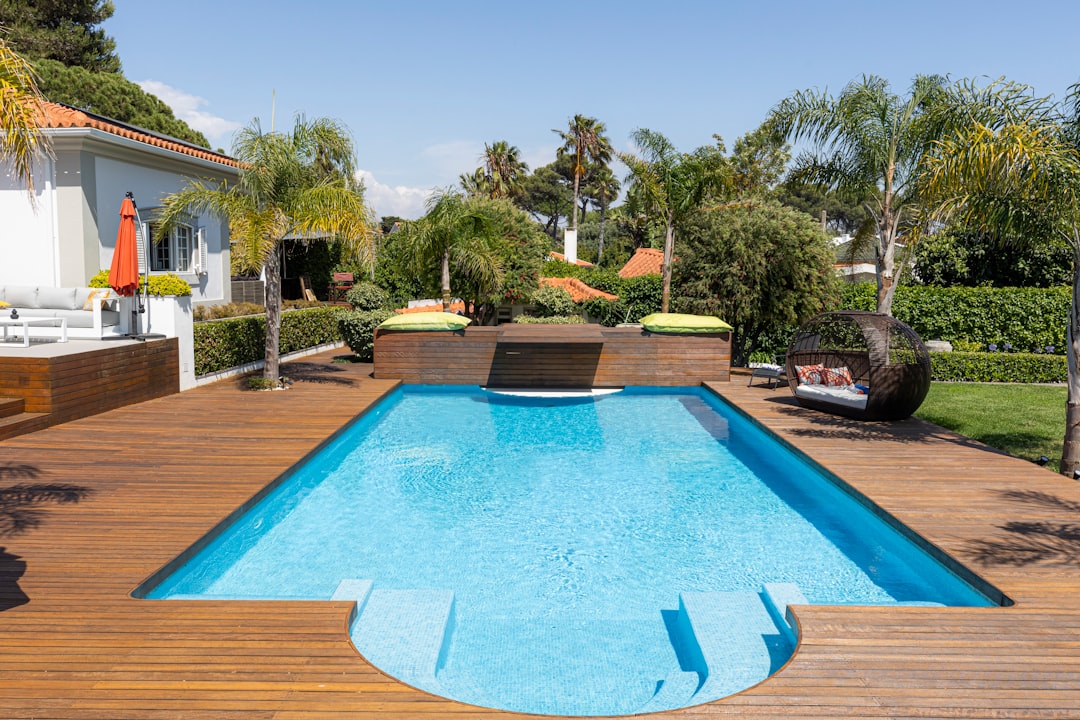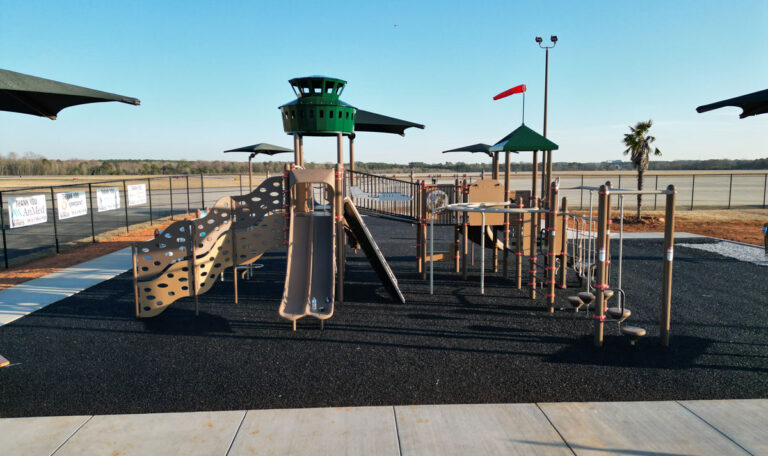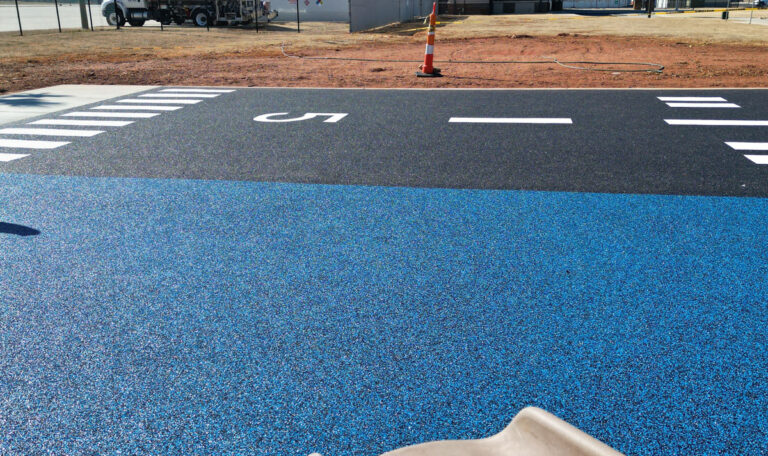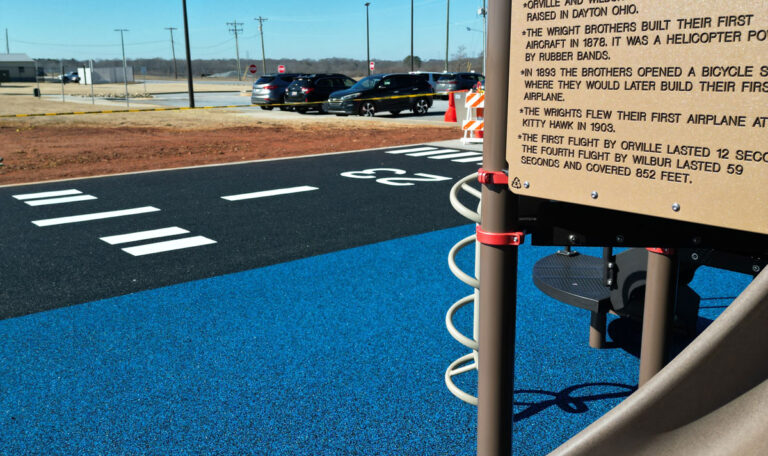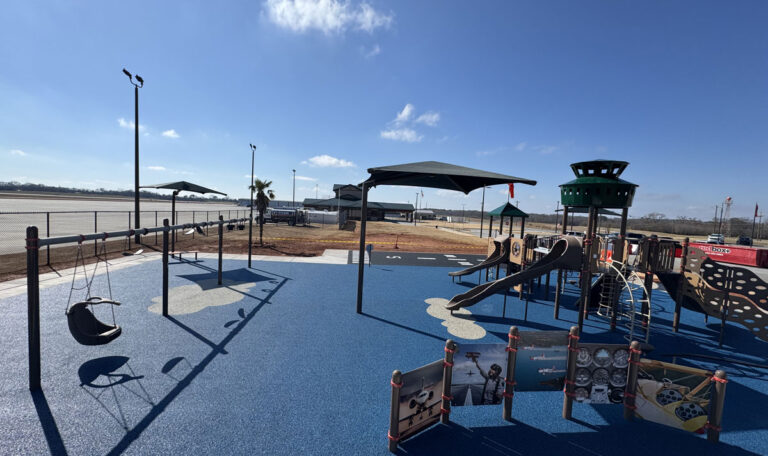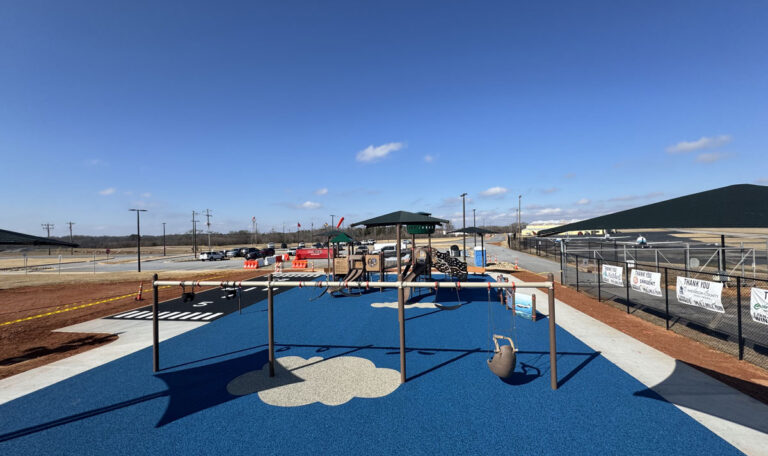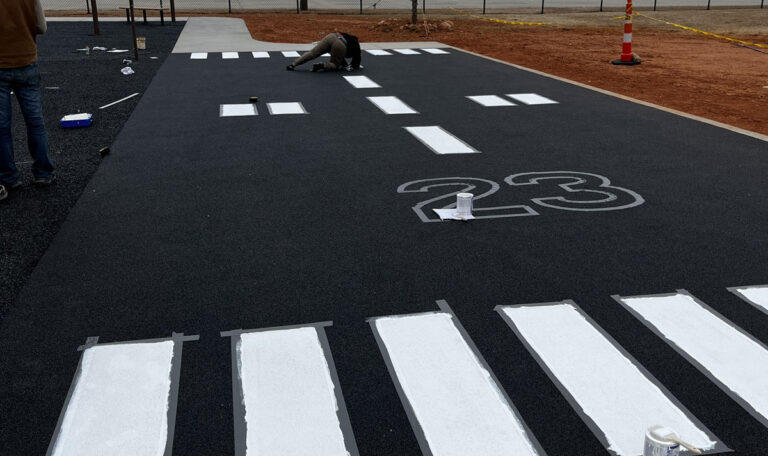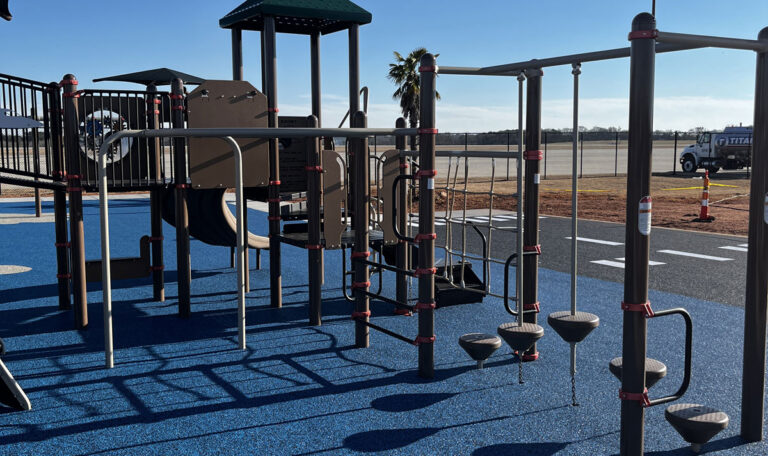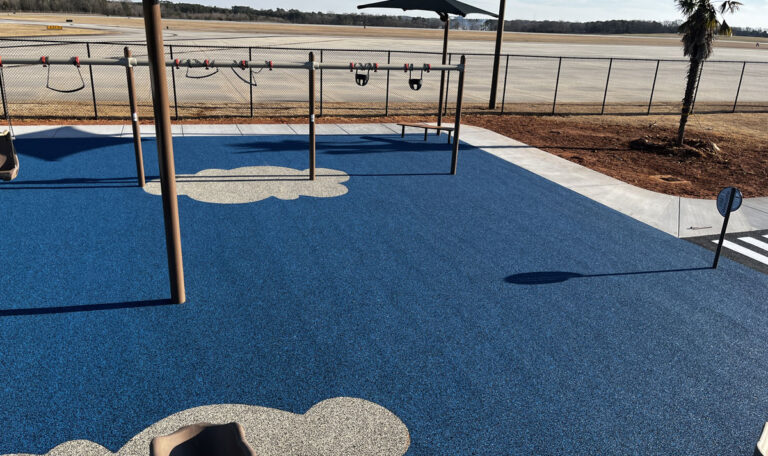Why Pool Deck Resurfacing is Essential for Your Backyard Oasis
As millions of pools age past 15 years, owners are seeking cost-effective alternatives to full replacements. Pool deck resurfacing options offer a solution for cracked concrete, faded surfaces, and safety or aesthetic upgrades, saving thousands while creating a beautiful, functional space.
The most popular pool deck resurfacing options include:
- Concrete Overlays – $3-$10 per square foot, versatile designs
- Textured Concrete Finishes – $8-$20 per square foot, mimics natural materials
- Pavers and Natural Stone – $10-$40 per square foot, premium durability
- Cool Deck Coatings – $1.50-$5 per square foot, temperature reduction
- Poured Rubber Surfacing – Professional installation, superior safety and sustainability
Pool decks endure constant exposure to water, chemicals, UV rays, and foot traffic, leading to inevitable wear and tear. Resurfacing addresses these issues while improving safety, boosting property value, and extending your deck’s lifespan – all at a fraction of the cost of complete replacement.
I’m Landon Olson, a mechanical engineer and MBA behind Replay Surfacing. We specialize in changing recycled materials into innovative pool deck resurfacing options that prioritize sustainability and performance, drawing on my experience in manufacturing and safety surfacing to solve real-world problems.
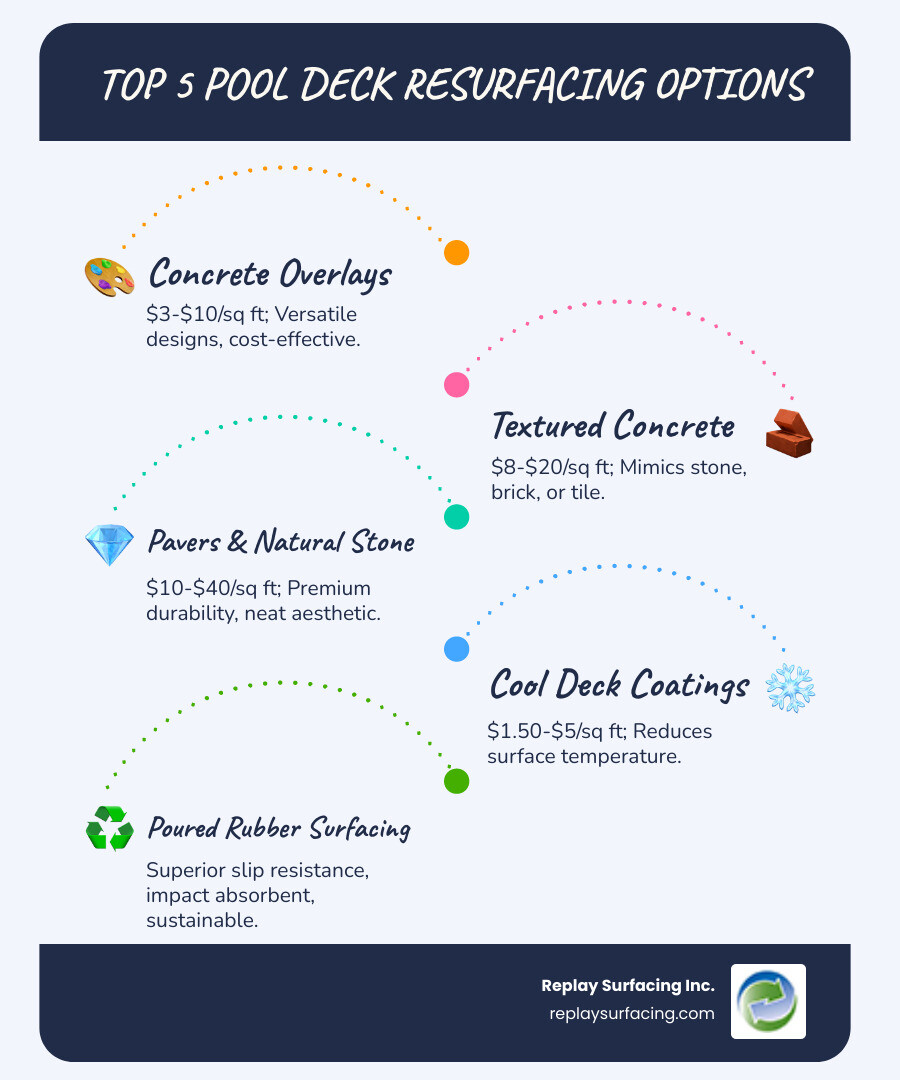
Easy pool deck resurfacing options word list:
The Crucial First Step: Preparing Your Deck for a New Surface
Any of the pool deck resurfacing options are only as good as the preparation underneath. Proper surface prep is the foundation of your project; skipping it ensures even the best materials will fail prematurely.
Surface preparation is absolutely critical because it determines whether your new resurfacing material will bond properly and last for years to come.
The process starts with clearing the deck, followed by a deep clean via pressure washing to remove stains, mildew, algae, and old sealers that hinder adhesion.
Once clean, it’s time for crack repair. Any cracks or chips need attention with appropriate patching compounds. This prevents larger issues, as new materials won’t bond to damaged concrete and flaws will show through.
For many resurfacing methods, especially concrete overlays, we create the right surface texture through grinding. This roughens the existing concrete so the new material can grip it. However, traditional grinding creates hazardous silica dust from the sand in the concrete. Inhaling this can cause serious health issues.
Advanced techniques like Dustless Blasting are a safer alternative, reducing dust by 90% compared to traditional methods. Dustless Blasting also creates a better surface profile than pressure washing alone, giving you the perfect rough texture for new materials to adhere to.
The final step is applying a bonding agent to ensure maximum adhesion between the old deck and the new surface.
Getting this preparation right sets the stage for whichever of the pool deck resurfacing options you ultimately choose – whether that’s concrete overlays, textured finishes, pavers, or sustainable rubber surfacing.
A Deep Dive into Pool Deck Resurfacing Options
Now that your deck is prepped and ready, it’s time to explore the exciting world of pool deck resurfacing options that can transform your outdoor space from tired to inspiring. Each option has its own personality, strengths, and style.
Concrete Overlays & Coatings
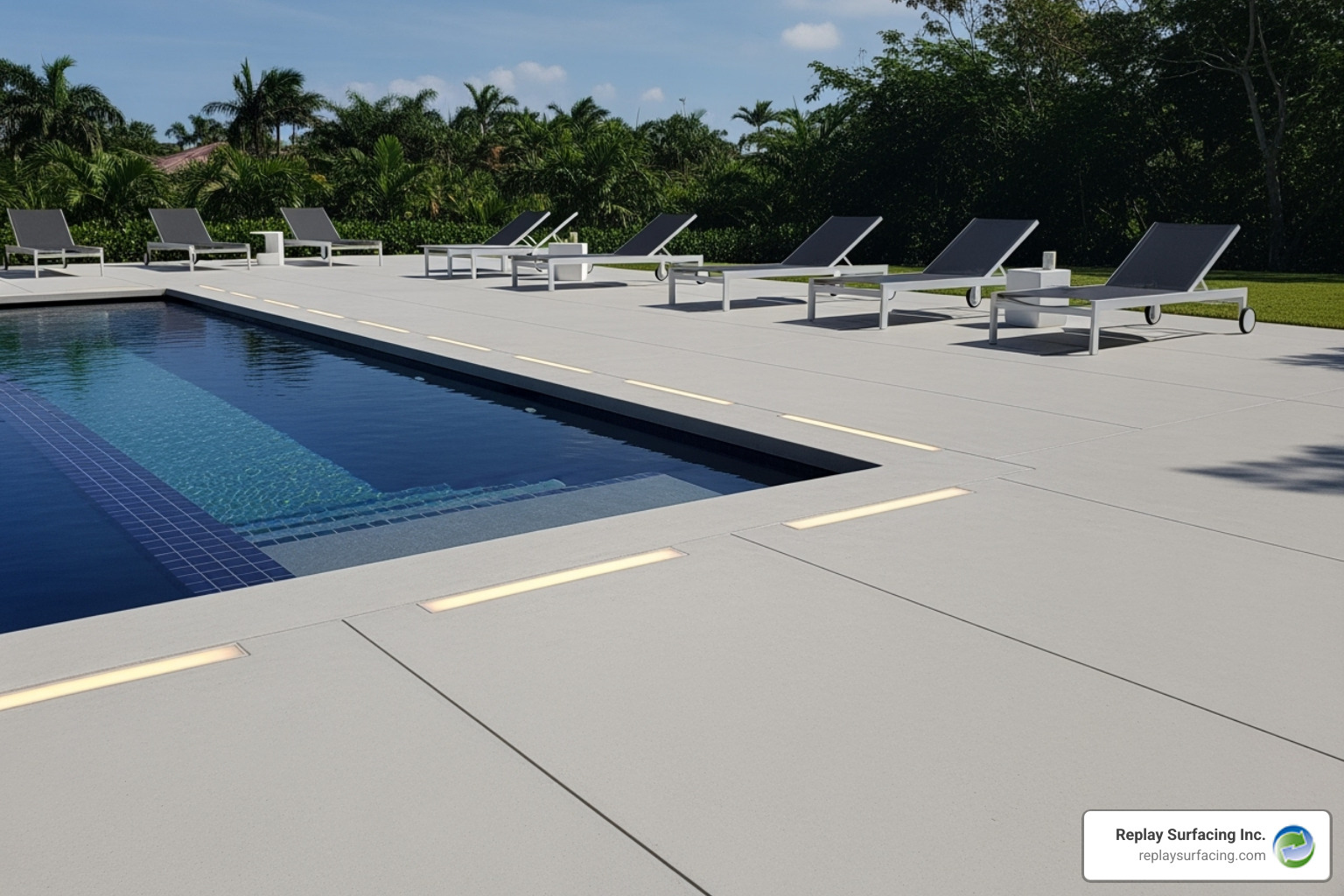
Concrete overlays cover imperfections while adding beauty and protection. These thin layers of cement, sand, and polymer resins create a new surface right over your existing concrete.
Overlays are versatile, ranging from simple roll-on coatings to spray textures (knockdown finishes), offering endless design possibilities from modern looks to stone or tile mimics.
Cost-effectiveness is a major advantage, with basic resurfacing running $3-$5 per square foot and decorative options in the $3-$10 range. Many modern coatings also reflect heat, keeping your deck cooler by up to 38 degrees.
However, while some coatings are DIY-friendly, professional installation is often needed to prevent cracking from improper application or shifting concrete. Improper installation can lead to cracking, and regular sealing is required to achieve a 10-15 year lifespan.
The installation process involves applying a bonding agent, then spraying or troweling the overlay material. Decorative treatments happen while the material is wet, followed by sealing once cured.
For more detailed information about concrete coatings and their applications, check out our guide on concrete coatings.
Textured Concrete Finishes
If you want the high-end look of natural stone without the premium price tag, textured concrete (stamped concrete) might be your perfect match. This technique creates incredibly realistic patterns and textures.
A concrete mix is applied and then stamped with mats to create patterns like flagstone, slate, or brick. Color is mixed in or applied to the surface.
The results provide a sophisticated, custom look that boosts property value. It’s also incredibly durable, lasting 20 to 30 years with proper care while resisting wear and UV damage.
The trade-offs are cost and complexity. This labor-intensive process costs $8-$20 per square foot and requires skilled professionals. Some patterns can become slippery when wet without non-slip additives, and it requires periodic sealing every 2-3 years.
Installation requires precise timing. After prep, the overlay is applied, stamped while wet, then cleaned and sealed once cured.
Pavers and Natural Stone
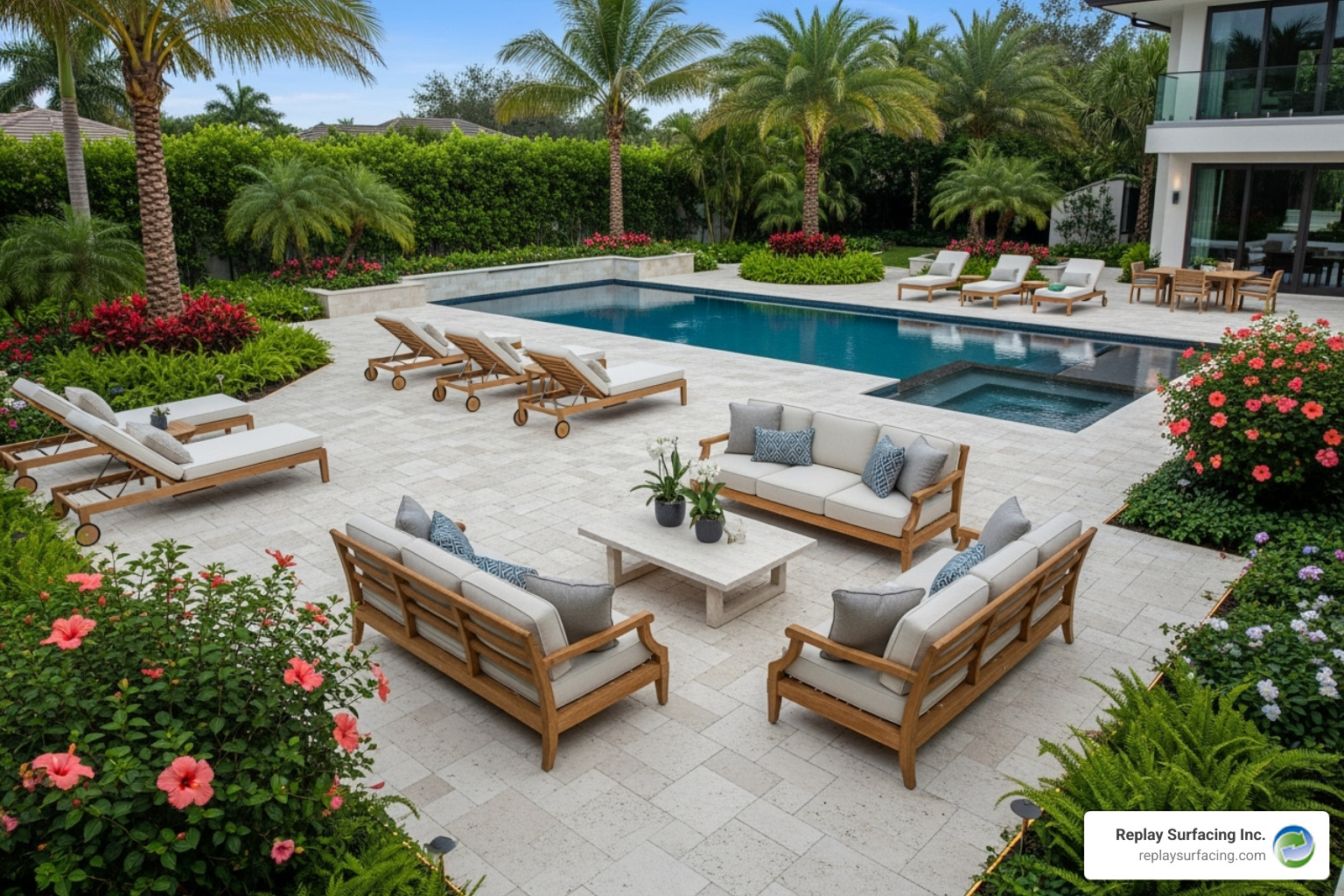
For a luxurious outdoor retreat, pavers and natural stone are the premium tier of pool deck resurfacing options, offering timeless elegance.
Pavers (concrete, brick, clay) and natural stone (travertine, flagstone) offer unique character and beauty.
The aesthetic appeal is undeniable. Both create a high-end look that increases home value. Natural stone like travertine offers unique patterns and stays cool underfoot.
Durability is another major strength. These materials can last 20-25 years or more, and with pavers, individual damaged pieces can be replaced easily.
The main drawback is cost ($10-$40+ per sq ft) and labor-intensive professional installation needed for proper drainage and leveling.
Maintenance involves regular sweeping and occasional pressure washing. Grout lines and paver joints need periodic cleaning and sealing to prevent dirt and weeds.
Cool Deck Coatings & Paint
When summer heat makes your pool deck too hot, cool deck coatings and specialized paints offer a refreshing solution that prioritizes comfort.
These acrylic or polymer-based coatings reflect sunlight and dissipate heat, with some reducing surface temperatures by up to 38 degrees.
The budget-friendly nature makes these coatings attractive, with basic applications costing as little as $1.50 per square foot for materials. Many are DIY-friendly and provide excellent slip resistance.
However, some paints require frequent reapplication every few years, increasing long-term costs. Poor prep can lead to peeling or chipping, and the aesthetic may not match higher-end options.
Installation requires careful surface preparation, mixing, and application in multiple coats. For maximum cooling, light pastel colors work best.
For those interested in tackling this project themselves, our comprehensive guide on DIY Pool Deck Resurfacing provides detailed instructions and tips.
Poured Rubber Surfacing
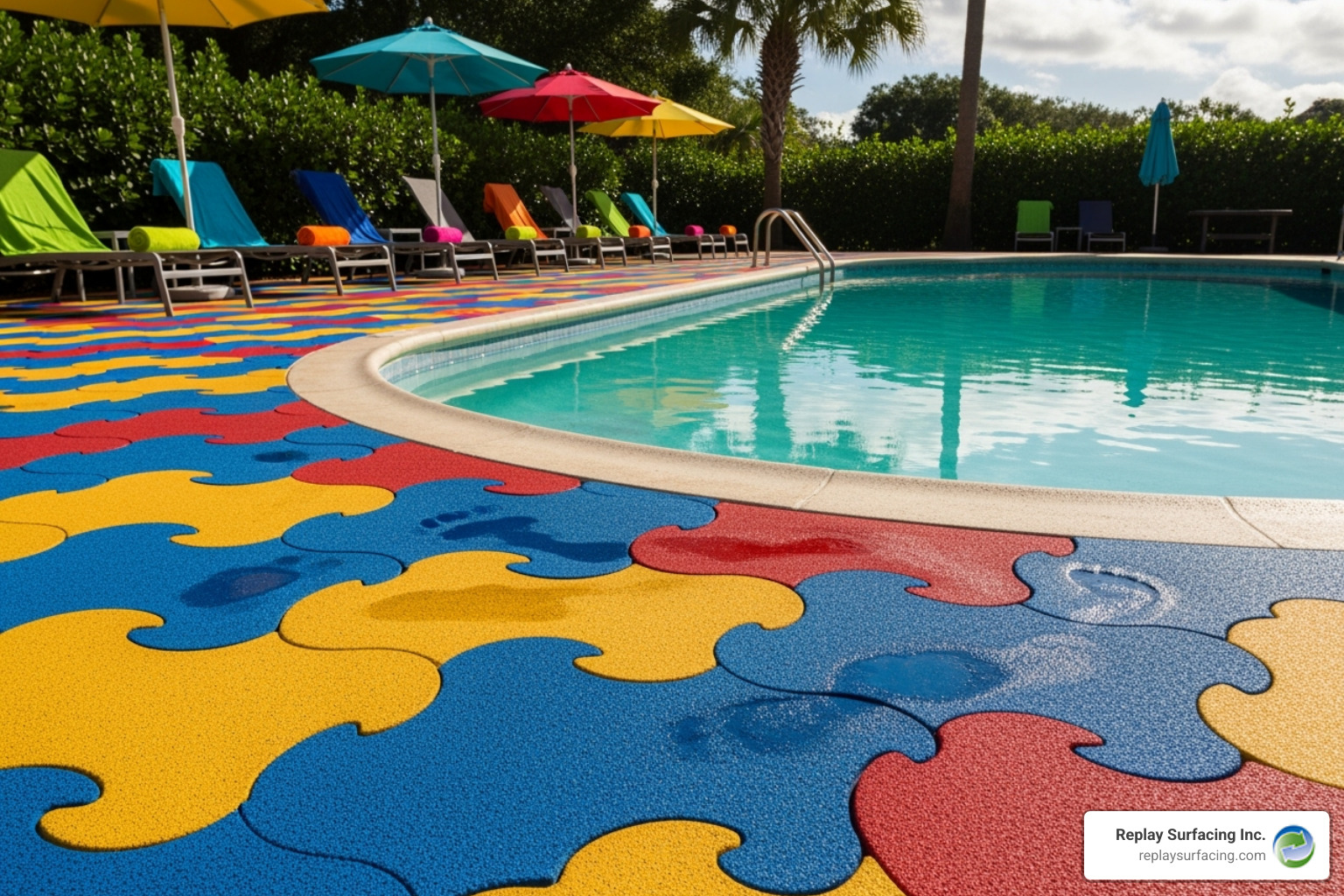
At Replay Surfacing, we’re passionate about poured rubber surfacing as one of the most innovative pool deck resurfacing options available.
Our surfaces start with recycled tire materials, typically EPDM or TPV rubber granules. We mix these with a high-strength polyurethane binder on-site, then pour and trowel the mixture to create a seamless surface. We transform environmental hazards like old tires into beautiful, functional surfaces.
Poured rubber offers remarkable safety benefits, including superior slip resistance when wet and excellent shock absorption. This cushioning reduces joint impact, creating a comfortable surface ideal for families.
Sustainability is at the heart of what we do. By utilizing recycled tires, we give new life to materials that would otherwise create environmental problems.
The customization possibilities are virtually unlimited. We can mix a vast array of colors to create unique patterns, designs, and even logos.
Maintenance is simple. The seamless surface has no grout lines to clean and resists mold and mildew. Regular sweeping and occasional rinsing are usually all that’s needed.
The main considerations are a higher upfront cost and the need for professional installation to achieve a seamless, uniform surface. However, the long-term value often justifies the investment.
Our process involves cleaning and priming the surface, mixing rubber granules with binder on-site, and troweling the mixture to a smooth finish that cures within 24 hours.
Learn more about our Rubber Surfacing for Pool Decks and find how we can transform your outdoor space.
Key Factors in Choosing Your Ideal Surface
Selecting the right pool deck resurfacing options requires balancing lifestyle, budget, and style with comfort and safety. Here are the key factors to consider.
Budget considerations often drive the decision. Consider the total cost of ownership, including maintenance and repairs, as the cheapest option isn’t always the most economical long-term.
Durability requirements depend on use. For high-traffic areas, choose robust materials like pavers, natural stone, or poured rubber surfacing.
Your local climate matters. Hot regions benefit from heat-reflective or naturally cool materials, while areas with freeze-thaw cycles need crack-resistant options.
Aesthetic preferences are personal. Your pool deck should reflect your style and complement your home’s architecture.
Safety needs are non-negotiable. Slip-resistant surfaces are crucial, especially with children or elderly family members.
Finally, be honest about your maintenance commitment. Some materials require periodic sealing, while others, like poured rubber, are low maintenance.
| Resurfacing Option | Cost ($/sq ft) | Lifespan (Years) | Slip-Resistance | Coolness Underfoot | Maintenance Level |
|---|---|---|---|---|---|
| Concrete Overlays | $3 – $10 | 10 – 15 | Good (textured) | Moderate – Good | Moderate |
| Textured Concrete | $8 – $20 | 20 – 30 | Moderate (can be slippery) | Moderate | Moderate |
| Pavers & Natural Stone | $10 – $40+ | 20 – 25+ | Good (porous/textured) | Good (especially stone) | Moderate – High |
| Cool Deck Coatings | $1.50 – $5 | 5 – 10 | Good | Excellent | Moderate – High |
| Poured Rubber Surfacing | Higher upfront | 15+ | Excellent | Excellent | Low |
How Temperature and Slip-Resistance Vary by Material
When evaluating pool deck resurfacing options, temperature and slip-resistance are critical for poolside comfort and safety.
Temperature control starts with color. Lighter shades of any material reflect more sunlight and stay significantly cooler.
Cool deck coatings are engineered to reduce surface temperatures, some by as much as 38%, making them excellent for hot climates.
Natural stone like travertine stays cool due to its porous nature, which prevents heat retention. It’s one of the reasons why luxury resorts often choose natural stone for their pool areas.
Poured rubber surfacing stays cooler than many hard surfaces and its cushioned nature doesn’t radiate heat like dense concrete.
Slip resistance also varies. Textured concrete overlays and porous materials like natural stone offer good grip. For materials that can become slippery, non-slip additives can be mixed into the sealer. Poured rubber excels here, providing superior grip even when wet, as its porous nature allows water to drain efficiently, reducing standing puddles.
Choosing a surface that offers both barefoot comfort and robust Non-Slip Pool Deck Surfaces is an investment in your family’s safety and enjoyment.
Maintenance Needs for Different Pool Deck Resurfacing Options
Ongoing maintenance is key to the longevity and beauty of your chosen pool deck resurfacing options.
Concrete overlays and textured concrete need cleaning and sealing every 2-3 years to protect against damage. Cracks require patching and blending.
Pavers and natural stone require replenishing joint sand and cleaning grout lines. Natural stone needs regular cleaning and annual sealing to prevent staining and water damage.
Cool deck coatings and paint are initially low-cost but may require reapplication every few years, increasing long-term costs. Good prep is crucial to prevent peeling, and regular cleaning is needed.
Poured rubber surfacing is one of the lowest-maintenance pool deck resurfacing options. Its seamless nature eliminates grout lines where mold can grow. Regular sweeping or rinsing is usually sufficient. The durability and chemical resistance mean less worry about frequent repairs or reapplication, contributing to its long-term value.
Proper maintenance extends the lifespan of any pool deck resurfacing. For more comprehensive information about pool deck care and options, you can visit General pool deck information.
Frequently Asked Questions about Pool Deck Resurfacing
When it comes to pool deck resurfacing options, homeowners have many questions. Here are answers to the most common ones we receive at Replay Surfacing.
How long does pool deck resurfacing last?
The lifespan of a resurfaced pool deck ranges from 5 to over 15 years, depending on several key factors.
Material quality is a game-changer. Simple paint may last 3-5 years, while a concrete overlay can last 10-15 years. Stamped concrete, pavers, or natural stone can last 20-25+ years with proper care.
Our poured rubber surfacing is engineered for the long haul, typically lasting 15+ years with minimal fuss, handling constant foot traffic, UV rays, and pool chemicals.
Installation quality is critical. Poor installation can cut a deck’s lifespan in half, which is why professional installation is recommended for complex systems.
Your climate also plays a role. Intense sun, freezing winters, or high humidity all present different challenges that can affect longevity.
Finally, your maintenance routine can make or break your investment. Regular cleaning and timely repairs will extend your deck’s life.
Can I resurface my pool deck myself?
Some pool deck resurfacing options are DIY-friendly, while others are best left to professionals.
DIY-friendly options like simple coatings and paints can save money if you have basic home improvement skills. The key is being realistic about your abilities and the time required.
Professional territory includes complex options like pavers, natural stone, and stamped concrete, which require specialized tools, precise grading, and technique.
Our poured rubber surfacing also requires professional installation. While small DIY kits exist, a full pool deck needs specialized equipment and expertise to achieve a seamless, durable finish.
Don’t let your DIY ambitions turn into a costly do-over. When in doubt, get professional quotes; the guaranteed results are often worth the investment.
How much does it cost to resurface a pool deck?
The cost to resurface a pool deck varies based on several factors. Square footage is a primary factor, but material choice and labor costs are the biggest cost drivers.
The condition of the existing deck also impacts the price, as extensive prep work adds to the cost but prevents premature failure.
Here’s what you can expect to invest in different pool deck resurfacing options:
Basic concrete resurfacing with simple coatings or paint typically runs $3-$5 per square foot. DIY cool deck coatings can be as low as $1.50 per square foot for materials.
Concrete overlays with decorative textures usually cost $3-$10 per square foot.
Textured concrete or stamped finishes range from $8-$20 per square foot.
Pavers can vary from $10-$40+ per square foot, while natural stone typically falls in the $15-$40 range.
Poured rubber surfacing has a higher upfront investment, but its durability, low maintenance, and safety features deliver excellent long-term value.
Compared to a full demolition and replacement, which can cost over $30,000, resurfacing is a smart financial decision that avoids massive disruption and expense.
Conclusion: Making the Best Choice for Your Backyard Oasis
Choosing among pool deck resurfacing options is an opportunity to create your ideal outdoor space. From budget-friendly concrete overlays to luxurious natural stone and innovative poured rubber, each option offers unique benefits in affordability, aesthetics, or durability.
There is no single “perfect” choice; the best option depends on your needs. However, safety should always be the top priority. A slippery deck is a hazard, especially around a pool.
Next, consider long-term value. Balancing initial cost with durability and maintenance often leads to better outcomes, as investing in quality materials and installation can save money on future repairs.
Your desired aesthetics matter too. Your deck should reflect your personal style and complement your home’s architecture.
Finally, be honest about your maintenance commitment. Choose what fits your lifestyle, whether it’s a material that requires regular sealing or a low-maintenance option like poured rubber.
At Replay Surfacing, we help you choose with confidence. Our commitment is to turn environmental hazards into sustainable, durable surfaces, giving you a beautiful deck that is safe, comfortable, and eco-friendly.
We believe outdoor spaces should combine safety, beauty, and responsibility. Poured rubber surfacing delivers on all fronts with superior slip resistance, comfort, endless design options, and the satisfaction of using recycled materials.
Ready to take the next step toward creating your perfect backyard oasis? We’re here to help you explore custom rubber surfacing for your pool deck and find the solution that’s just right for your home.

